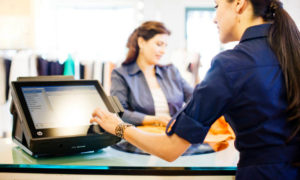Earlier today I did some early Black Friday shopping and during check out a few sales associates asked me if I’d like to make a donation to charity. I recall some years back being exposed to these type of fundraising campaigns in supermarkets, if I didn’t donate, I felt guilty and perhaps thought the person next to me would think I was shallow because I didn’t care about supporting causes. But these days, I politely decline. I’m skeptical of these type of campaigns and don’t feel comfortable not knowing where my money is going; even if it’s just a few dollars.
In Point of Sale campaigns, a retailer solicits a donation via a cashier and shoppers are encouraged to make a donation; this is very common type of cause marketing campaign among retailers. Point of Sale is a way for corporations to express their philanthropic side by partnering with nonprofit organizations to help them raise money and awareness; in return, it generates more business for the organization. Cause marketing campaigns benefit from what economists calls – the warm glow effect – in which consumers walk away feeling good about themselves. In psychological terms, by donating to a checkout charity the consumer has earned “moral credit” and gives one the license to do something that’s not as virtuous, like spending money on something frivolous (Small Business, 2017). Everyone wants to see themselves in a positive light and point of sale companies give consumers the chance to engage in “prosocial” behavior in the hopes that there’s a halo effect and consumers’ positive sentiment translates into customer loyalty and higher sales. It’s quick, it’s easy and convenient; there is not an end in sight (Great Fall Tribune, 2017).
The Better Business Bureau addresses many unresolved questions regarding checkout charity campaigns, such as; What role does the store play in supporting the charity besides your donation? Does the store receive a match for any of the donations? Does the store receive a tax write off? Does the store charge the charity administrative fees? What percentage is donated directly to the charity? Many of those questions continue unanswered because there is little regulation and it remains unclear who’s keeping track of the roundup donations. Experts explain that there should be more transparency with point of sale campaigns; materials to tell you about the campaign, the goal of the campaign, and how much of the money donated is going to the nonprofit (foxtvnews, 2017). What will you say the next time the cashier says, “Would you like to make a donation?”
What will you say the next time the cashier says, “Would you like to make a donation?”
References:
https://money.howstuffworks.com/checkout-charity-is-good-for-business.htm
https://www.greatfallstribune.com/story/news/2017/11/20/checkout-charities-contribute-millions-good-causes-use-caution-when-donating/880898001/
https://www.fox10tv.com/news/charity-checkout-who-s-tracking-round-up-donations/article_68c2eb4a-cd27-5132-b77a-8cb11ec27c9d.html
https://theconversation.com/asking-customers-to-donate-when-they-buy-stuff-may-be-good-for-business-102298
